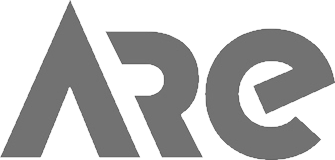There are many ways to measure indoor air quality. Sensors are becoming more popular and there are even ISO standards for low-cost sensors calibration methods now, where different kinds of sensors like NDIR and PID are all used to get comparable readings of different parameters.
How It Works
- 720° is a flexible add-on solution that integrates easily with existing building automation systems and sensors anywhere in the world
- Precise data supports timely decision-making and carefully targeted maintenance measures that result in better occupant satisfaction, lower building maintenance costs and higher building value
- 720° Analytics compares properties and transforms billions of data points into value-adding knowledge
- 720° Display is the key to excellent communication and building trust between real estate management and tenants

The world’s smartest solution for improving indoor environmental quality
720° combines artificial intelligence, cutting-edge indoor environmental quality expertise and organizational behavioral aspects to improve the indoor environment in entire building portfolios on a global scale.
What can we measure?
720° core features and predicted actions
Book a demo

Predictive status board
Predictive maintenance
The thing you have been waiting for so long is finally here, truly predictive maintenance, no hype, just solid hard work with decades of experience.

The hidden layers of AI
The power of Artificial Intelligence
We develop several hidden layers of intelligence that allows us to combine billions of data points resulting in simple suggestions.

Communication
Real-time interface for occupants
Have a majority of all questions answered through customized interfaces accessible through displays, both physical and virtual, to all occupants.

Reporting made easy
Automated high quality reporting
Reports are generated for either individual buildings or entire portfolios and sent either on a set schedule or ad hoc, for the manager too busy to log in to the system every month.
Customers choose us for outstanding expertise that comes from being the first solution of our kind in the world



Questions and answers
Air quality has a huge impact on our comfort and well-being, it defined the particles we breath in and the sensations we have as humans.
Air quality is regulated by local authorities in most countries, there is a big involvement in workplaces by the workers councils as well, where ultimately the general comfort and well-being of people is observed and prioritized.
There are a lot of different monitors on the market, in the end most use the same main components, and it comes down to a matter of data frequency and calibration quality. We prefer to evaluate sensors constantly and choose the best sensor for the use case and budget.
Indoor air pollution might be seen as coming from interiors or activities indoors – like cooking or cleaning, while a large portion of indoor pollutants have their source outdoors, and this is why indoor air can be cleaner than outdoors.
Office environments are very diverse, and most have ventilation already, which is a great first step. The next step is to manage the building so that ventilation rates, pressure differentials and pollutant sources are all under control and optimized.
In most cases a well ventilated and filtrated indoor environment is better than outdoor, since the source of air is still outdoor and filtrating the air improves on the quality.
It depends on the environment, in a well ventilated area it is not usually worth it to have a secondary local air purifier, however, in a poorly ventilated area they can bring a lot of added value.
Book a demo





